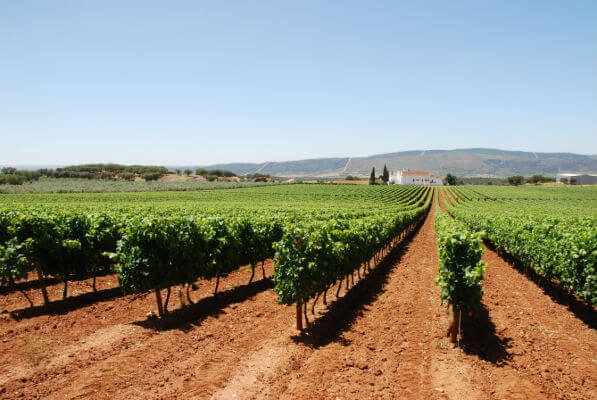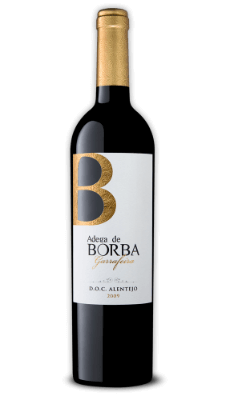Text João Barbosa | Translation Jani Dunne
When cooperative cellars emerged, they brought with them concerns about quality, which at the time were unheard of in Portugal. On the other hand, they allowed farmers to make a higher profit than that big companies make in sales, many of which were just warehouses where everything was mixed together.
In the 80s (of the 20th century to be specific), cooperative cellars in Alentejo aimed further, and brought oenology technologists in, thus enabling the creation of higher-level wines. João Portugal Ramos, now an independent producer and with business in many regions, was the first(!) Portuguese leading wine maker.
However, winegrowers started to crop up in the following decade. They believed in the quality of their wine, and that they deserved higher earnings than those produced by sales to cooperatives and big operators in the market dealing wine in bulk, or almost.
They had the courage to put their head on the chopping block, risking money, working furiously towards success, which cannot be done by somebody else. Some did not make it, but many more did, and that number has grown.
The market – that shapeless creature which appears in different costumes – was delighted, and punished cooperative cellars; sometimes fairly, and other times with no excuse. I think they all suffered with the deprecating label “the market” put on them.
I don’t know the whole story of Adega Cooperativa de Borba, but it mustn’t have been free of misfortune. The past doesn’t matter here, only the present. Today, that animal called “consumer” acknowledges quality and doesn’t care about the word “cooperative”.
This company’s success has to do with the competence of those in charge of the partners, those who assemble the lots in the cellar, and those who manage in a modern and competent fashion. All of the above makes the salesmen’s job much easier.
There’s a myth – perhaps with some truth to it – that Alentejo wines have no longevity. Two or three years ago, I tasted Adega de Borba Rótulo de Cortiça 1964 (red – there was no white) and it was “esmigalhador” (crumbling).

Vines in adegaborba.pt
April 24th 1955 marked the founding of Adega Cooperativa de Borba. At the time, there were 13 partners; today, there are about 300. Altogether, the land represents about 4942 acres of vineyards, of which 70% grow red varieties.
The Portuguese “consumer” is stubborn with wine – which is acceptable, just like their stubbornness in other aspects – and demands freshly made wines as much as freshly fished fish. This makes it unfair for wine, and consequently for the producer, and for the consumer, who does not drink wines that deserve more time to mature. One often hears the expression “wine paedophilia”.
The treasury of winegrowers and the opportunity to ship products are the reasons for the presence of young wines on shelves and in wine menus. A big establishment, such as Adega de Borba, finds an advantage in this, as long as it is well managed.
To create a wine for the rack, and to put it on sale five years after the vintage is practically a luxury. Adega de Borba released Adega de Borba Garrafeira red 2009 with its registered designation of origin as Alentejo – although they could have specified Borba as the sub-region.

Adega de Borba Garrafeira red 2009 in adegaborba.pt
This wine was made with grapes from the Alicante Bouschet, Aragonês and Trincadeira varieties, all of which have firmly established roots in calcareous and clay-rich soil. The lot rested in American and French oak casks for one year, then slept in the bottles for 30 months.
Opening them no longer falls within “wine paedophilia”, but I think they deserve to stay in store longer. How long? Just like with the lottery, there are always surprises – good or bad – when wine is stored for many years. I won’t put my word forward; I will, however, cite the oenologist’s advice: “up to ten years”.
When I am asked about the relationship between the quality and price of a wine – or anything else, really – I say I don’t know. The value we give money, the level of demand we place on a wine, financial availability, the moment, and
the purpose all form an equation only solvable by the individual himself/herself.
To me – this is only my opinion and should in now way be considered an answer to the question of the relationship between quality and price – Adega de Borba wines are priced prudently and present above-average quality as well as a lower price than others on the same level.
Adega de Borba white, Adega de Borba Rosé white and Adega de Borba red are sold at 2.89 euros, a price set by the producer. It’s easy to argue at this level given a more-than-affordable price. If what you really want is an Adega de Borba Garrafeira red 2009… it’s best to compare it to fellow officers in the same rank, preferably with the help of a winery keeper. The producer sells it at 15.75 euros.
Contacts
LARGO GAGO COUTINHO E SACADURA CABRAL 25, APARTADO 20
7151-913 BORBA, PORTUGAL
Tel: (+351) 268 891 660
Fax: (+351) 268 891 664
Website: www.adegaborba.pt




Leave a Reply